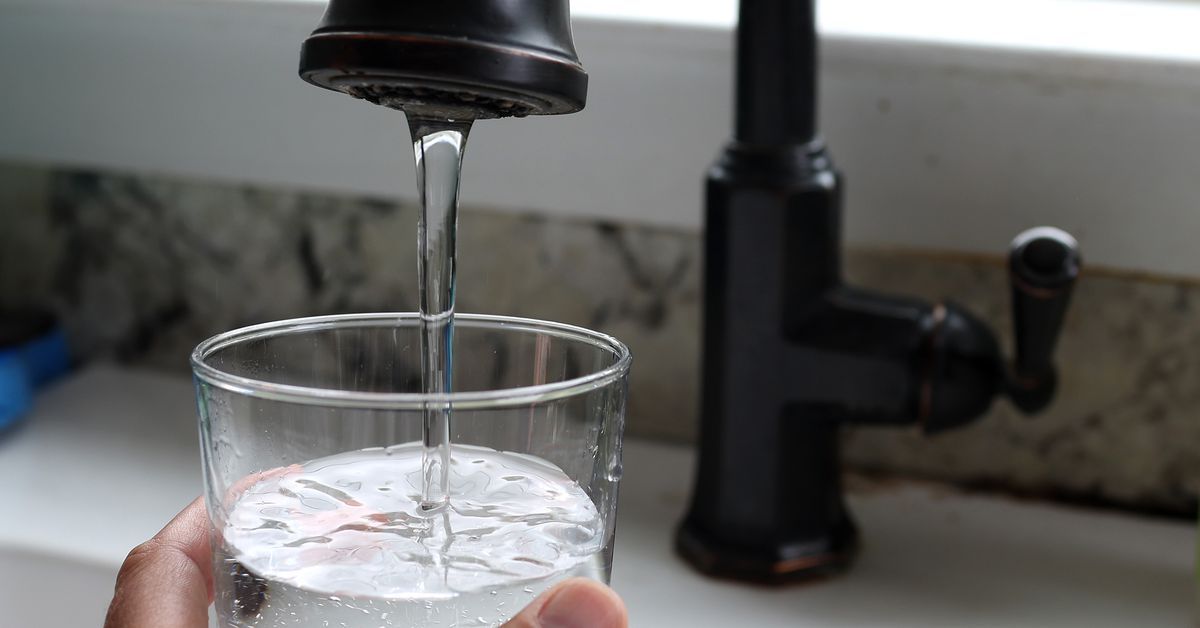How to remove PFAS
According to a new federal study, 45 percent of the United States’s tap water supply could contain at least one form of PFAS, a class of “forever chemicals” that’s been tied to negative health outcomes.
Completely removing PFAS from local water supplies isn’t easy — experts told Vox that the problem can really only be resolved if companies that utilize PFAS heavily in their products, like DuPont and 3M, curb their usage or pay for cleanup. Public water utilities must also adhere to regulations meant to make sure water is safe to drink, though policies on PFAS vary by state.
“The issue and the cost and the burden of all this shouldn’t fall on communities, it shouldn’t fall on the consumer. It’s the polluter that needs to pay,” says Tasha Stoiber, a senior scientist at the Environmental Working Group.
But there are things individuals can do to reduce their exposure to the chemicals: First, they can check with their public utility about whether there has been PFAS detected in their area. (If they use a private well, they can get it tested.) And if PFAS has been found in their water supply, they can utilize filtration systems to screen it out.
“The first step is the education piece of it, finding out if there is PFAS in your water,” says Stoiber. “A lot of these filters are quite effective at removing PFAS. And that’s a step that people can take.”
What are PFAS, why are they bad, and are they in my water?
PFAS, which is short for per- and polyfluorinated alkyl substances, are chemicals that repel oil and water, and that take a very long time to break down (which is why they’re commonly referred to as forever chemicals).
Exposure to PFAS, which is found in everything from nonstick pans to firefighting foam to outdoor gear, has also been linked with certain medical conditions, including cancers, hypertension during pregnancy, and weakened immune systems in children.
The recent government report, which was conducted by the US Geological Service over the course of five years, examined tap water at 716 locations including people’s homes and offices. It screened for 32 individual PFAS compounds, and found the highest concentrations of these chemicals in urban areas and specific regions including the Great Plains, Great Lakes, Eastern Seaboard, and Central and Southern California.
These higher concentrations are likely tied to the prevalence of PFAS around production facilities and other sources such as landfills and wastewater plants. Places with more people could also have a higher presence of PFAS because more products containing these chemicals are in regular use.
The release of the study follows the Environmental Protection Agency’s advisories in June 2022, which warned that the presence of PFOA and PFOS, two of the most common forms of PFAS, could be hazardous, including at low levels.
How to filter PFAS out of your tap water
As the USGS report noted, different types of PFAS exist in different concentrations in drinking water across the country. The first thing that anyone concerned about PFAS should do is to figure out whether it’s present in the region they live in and at what levels.
“If the person has publicly supplied water, they should be able to obtain a report from their local utility. Otherwise, they also can search the tap water database from the Environmental Working Group,” says Jamie DeWitt, a professor of pharmacology and toxicology at Eastern Carolina University. “If the person is on a private well, unless they are covered by a court order due to known contamination, they will have to send their water out for testing on their own. Many departments of public health have recommendations on where water can be sent for different types of testing.”
The EPA recommends people look at the agency’s standards and those set by different states as benchmarks for evaluating PFAS levels in their area. Previously, the EPA has cautioned against ingesting more than 0.004 parts per trillion of PFOA and 0.02 parts per trillion of PFOS, which “equates to about 4 drops and 20 drops of water in 1,000 Olympic-sized swimming pools,” per PBS.
Stoiber notes that any level of PFAS is concerning and recommends the filtration of drinking water across the board. “Really, you don’t want any level of PFAS in your water because it has been linked to harmful health effects at quite low levels,” she told Vox.
There are a range of water filters that can target PFAS, but they vary in efficacy. According to a 2020 study and the experts Vox spoke with, a reverse osmosis water filter is the most effective tool for removing PFAS.
That review found that these water filters — which can be installed under a kitchen sink — are over 90 percent effective at screening out these chemicals. The filters work by sifting water through a membrane that has very “tiny holes,” says Stoiber, and the PFAS molecules get trapped as a result. The downsides of reverse osmosis filtration systems are that they waste significant amounts of water and can be pricey, costing anywhere from hundreds to thousands of dollars.
Activated carbon filters can also reduce levels of PFAS, but were found to be less effective, according to the 2020 study. These types of filters were able to remove, on average, 73 percent of PFAS contaminants, though there was more variability. They work by attracting PFAS molecules to carbon and can be used in sinks, refrigerators, and pitchers. And while they are more cost-effective, they also have to be replaced promptly, or else their efficacy declines. Standard Brita water filters use a form of carbon technology and can remove some PFAS, but aren’t built for this express purpose, so shouldn’t be counted on solely to filter out the chemicals.
When it comes to PFAS, experts note that filtered water is a better option than switching exclusively to bottled water, which can be costly, wasteful, and potentially include its own contaminants. They say, too, that ingestion poses the biggest risk of PFAS exposure relative to other water uses like showering, hand-washing, and clothes washing. If you can, the best thing to do is to filter your own water if you live in a contaminated area.
“Bottled water is known to have high concentrations of PFAS. There was a case in Massachusetts a couple of years ago where bottled water had very high concentrations of PFAS in it because it was sourced from PFAS-contaminated water,” Harvard environmental chemist Elsie Sunderland previously told Vox’s Benji Jones. “So I think you’re better off drinking filtered water from a known source.”
Source: Vox.com


